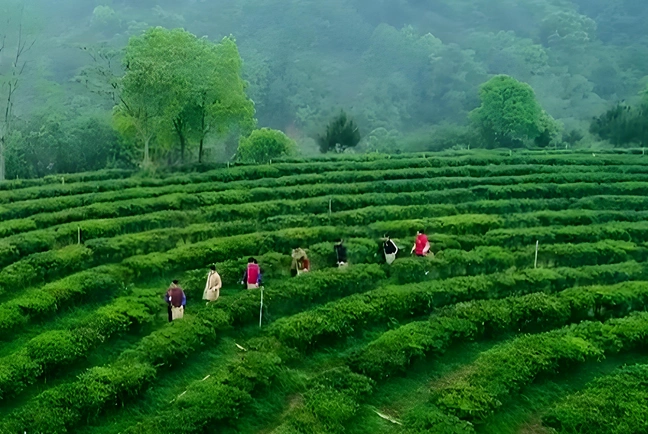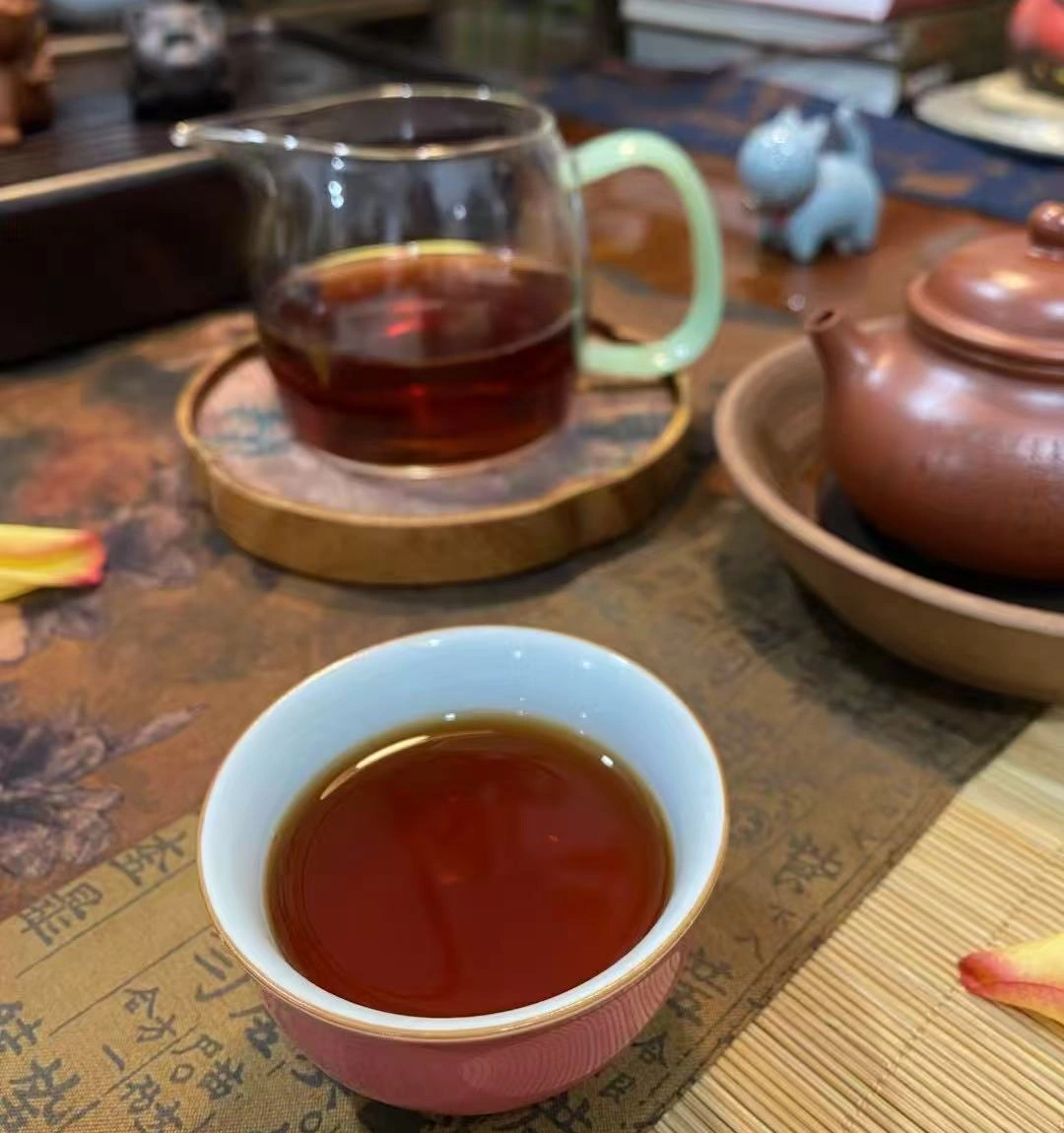Imagine the steam rising in voluptuous curls, carrying whispers of malted barley and honeyed earth straight to your senses. Dark tea is more than a beverage—it’s a sensory voyage. Mastering how to brew dark tea properly unlocks layers of flavor, transforming every sip into a moment of pure indulgence. Whether you crave the precision of gongfu brewing, the ease of a deep steep, or the warmth of a simmer, this guide leads you through each method with passion and clarity.
What Is Dark Tea?
Dark tea, known as hei cha in Chinese, is a post-fermented tea category hailing from China’s mist-clad mountains. Unlike green or classic black tea, dark tea undergoes an additional microbial fermentation—developed over weeks, months, or even years—that deepens its character.
- Origins & Varieties
Dark tea’s roots stretch back over a thousand years in Hunan, Guangxi, and Yunnan provinces. Pu-erh, Liu Bao, and Hei Bi Luo are star examples, each boasting unique terroir signatures: earthy musk from Yunnan, mellow sweetness from Guangxi, and a brisk finish from Hunan. - Flavor Profile
Picture a cup that evolves with every sip: first notes of toasted malt and cocoa husk, then warm tobacco and date-like sweetness, finishing with a velvety, lingering huigan (returning sweetness).
By understanding dark tea’s journey—from leaf to cup—you appreciate why how to brew dark tea properly matters so much to unlocking its full potential.

Health Benefits of Dark Tea
Few beverages marry indulgence and wellness like dark tea. Its post-fermentation crafts compounds that support your body:
- Digestive Support & Metabolism
The microbial action in dark tea generates enzymes that gently coax fats apart, helping you feel lighter after a hearty meal. - Cholesterol Reduction & Heart Health
Research indicates regular dark tea consumption can lower LDL cholesterol and support cardiovascular function, making each decadent cup a heart-friendly ritual. - Antioxidant & Immune Enhancement
Rich in polyphenols and theaflavins, dark tea combats free radicals and bolsters your immune defenses—transforming a daily habit into a shield against oxidative stress.
Choosing Teaware & Water Quality
Your vessel and water set the stage for success. The right tools elevate how to brew dark tea properly from routine to ritual.
- Yixing Clay Teapot vs. Porcelain Gaiwan
- Yixing Clay: Breathable clay absorbs and enhances earthy notes, yielding a rounded, voluptuous mouthfeel.
- Porcelain Gaiwan: Pristine white porcelain highlights clarity of infusion and delicate floral-malt aromas.
- Water Quality & Temperature
- Use fresh, filtered water with moderate mineral content.
- Heat to 95–98 °C—just shy of a rolling boil. too cool leaves the tea flat.
With the perfect vessel and water in hand, you’re ready to explore three distinct brewing methods.
Gongfu Brewing Method
Gongfu (工夫) brewing is a precision art, celebrating ritual and repetition to coax out every nuance of dark tea.
- Measure with Care
- Ratio: 5 g tea per 100-120 ml water.
- Feel the weight and texture of the leaves—large whole leaves promise crystalline clarity; broken leaf blends deliver bold body.
- Rinse (Awakening) Leaves
- Pour hot water over the leaves for 5 seconds, then discard the rinse.
- This “awakening” expels dust and primes the leaves to unfurl fully.
- First Infusion: The Prelude
- Steep for 8–10 seconds. The liquor glimmers amber, revealing initial malt and honey notes.
- Sip to awaken your senses, noting brightness and sweetness.
- Subsequent Infusions: Deepening Romance
- Increase steep time by 2–5 seconds each round.
- Flavors morph: mid-steeps unveil dried fruit and tobacco; later steeps unfurl forest floor and creamy toffee.
- Expect 8–15 infusions—each a new chapter in complexity.
By mastering gongfu brewing, you learn exactly how to brew dark tea properly to extract precise flavor arcs, from the bright exhilaration of the first steep to the soulful depth of the last.

Steeping (Menpao) Method
For a more relaxed ritual, the steeping or menpao method delivers a lush, full-bodied cup with minimal fuss.
- Tea-to-Water Ratio
- Western Style: 2 g tea per 200 ml water in a teapot or infuser.
- Extended Steep Time
- Steep for 3–7 minutes, depending on desired strength.
- Stir gently halfway to encourage even extraction.
- Balancing Body & Sweetness
- Shorter steeps (~3 min) emphasize honeyed brightness.
- Longer steeps (~7 min) deepen earthy richness and smooth out tannins.
This method is perfect for busy mornings or when sharing a pot with friends—simple, sensory, and sensational.
Boiling Method
Steep or brew in larger quantities? The boiling method—or “simmer brew”—turns dark tea into a savory, brothy elixir.
- Simmer Leaves
- Combine 5 g tea per 500 ml water in a small saucepan.
- Bring to a gentle simmer, then reduce heat to maintain a low boil.
- Duration
- Simmer for 5–10 minutes, uncovered.
- Watch carefully: too vigorous, and bitterness arises; too mild, and the infusion lacks body.
- Serving & Storage
- Strain into a thermos for on-the-go warmth or chill for a cold-brew concentrate.
- Boiled dark tea makes a robust base for lattes, cocktails, or iced teas.
The boiling method transforms how to brew dark tea properly into a communal, versatile practice—infusing every drop with comforting intensity.
Sensory Evaluation
Truly appreciating dark tea means engaging all your senses:
- Liquor Color & Clarity
Admire golden amber to deep mahogany hues. A clear cup signals expert brewing. - Aroma
Lean in. Toasted grain, smoked oak, black cherry? Each note seduces your scent receptors. - Mouthfeel & Flavor Notes
A silky caress on your tongue followed by layers of toffee, tobacco, and caramel fruit. - Finish (Huigan)
The sweet echo that lingers long after the last sip—proof you’ve mastered how to brew dark tea properly.
Common Mistakes & How to Fix Them
Even seasoned enthusiasts slip up. Here’s how to correct the most frequent missteps:
- Water Too Hot → Astringent, harsh flavor.
Fix: Let water cool 2–3 °C before pouring. - Water Too Cool → Flat, underwhelming infusion.
Fix: Increase temperature closer to 98 °C. - Incorrect Leaf Dosage → Weak or overpowering cup.
Fix: Adjust by 0.5 g increments until balance is perfect. - Skipping the Rinse → Muddled aroma and grit.
Fix: Always rinse leaves for 5 sec to awaken flavors and clear debris.
By recognizing these pitfalls, you ensure every cup sings with precision and delight.
Advanced Tips & Creative Servings
Elevate your practice and surprise your palate:
- Iced Dark Tea Concentrate
Brew double-strength tea, cool, then dilute over ice. Add citrus slices or mint for bright contrast. - Dark Tea Latte
Steep dark tea strong, froth milk (dairy or plant-based), and drizzle with honey or maple syrup. Sprinkle cinnamon or nutmeg. - Flavor Pairings
Match dark tea’s molasses sweetness with dark chocolate, smoked gouda, or spiced nuts. Embark on your own pairing adventure.
These innovations prove that learning how to brew dark tea properly can be both a disciplined art and a boundless playground.
FAQ: Dark Tea Brewing Questions
Q: How should I store dark tea for peak freshness?
A: Keep in an airtight, opaque container away from light, moisture, and strong odors—ideally in a cool, dark pantry.
Q: Can dark tea be brewed in an infuser or tea bag?
A: Yes, but loose-leaf brewing in a gaiwan or Yixing pot yields richer flavor layers.
Q: Should I adjust steep times for strength?
A: Absolutely. Boost boldness by adding 1–2 minutes to steep or taper off for lighter notes.
Conclusion & Recommendations
Mastering how to brew dark tea properly transforms every cup into a celebration of texture, aroma, and depth.
- Select the teaware that resonates: Yixing for earthy whispers, porcelain for vibrant clarity.
- Measure and rinse with mindfulness.
- Explore gongfu, steeping, and boiling to find your ritual.
- Observe, taste, and adjust until each infusion feels like magic.
Ready to embark on your dark tea odyssey? Choose a fine Pu-erh or Liu Bao from a trusted vendor, gather your favorite teapot, and let the ceremony begin. Here’s to countless cups of velvety warmth, soulful complexity, and the pure joy of knowing you brew dark tea just the way it was meant to be.



